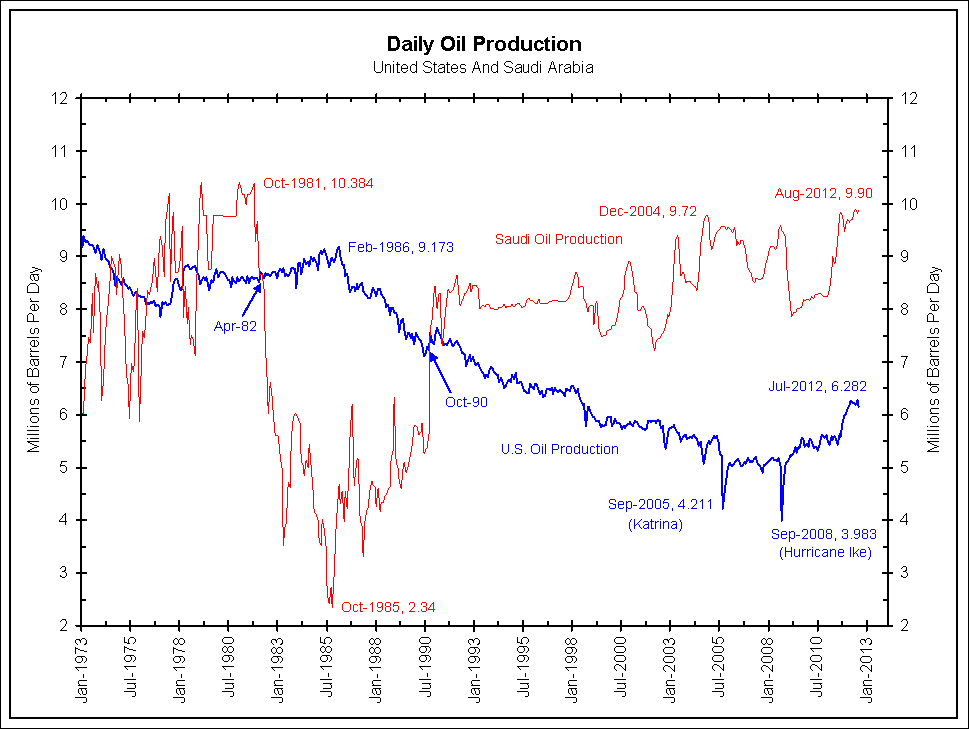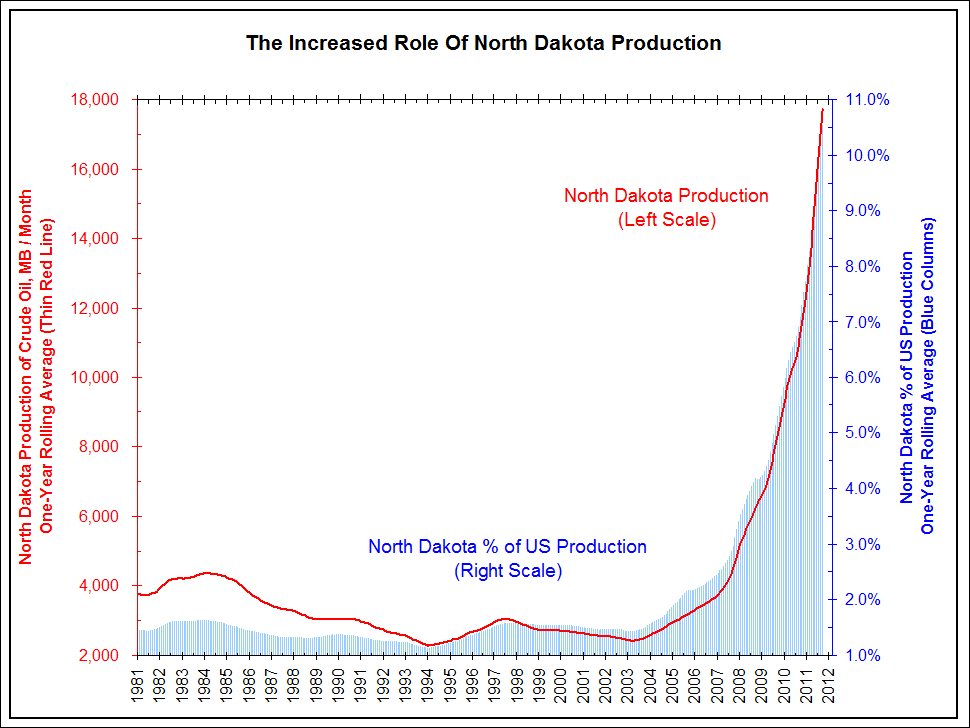The Telegraph – US to overtake Saudi Arabia in oil as China’s water runs dry
It is official. The US will overtake Saudi Arabia to become the world’s top oil producer by 2017. The International Energy Agency (IEA) said in its world outlook for 2012 this morning that the US will be a net exporter of gas by 2020, with all the vast implications of abundant cheap gas for its chemical, plastics, glass, and steel industries. “The United States, which currently imports around 20 per cent of its total energy needs, becomes all but self-sufficient in net terms – a dramatic reversal of the trend seen in most other energy importing countries,” it said. This is entirely due to the shale and gas revolution. North America as a whole will become a significant net exporter.
Comment
The chart below shows the history of Saudi and U.S. oil production. The last time the US produced more crude oil than Saudi Arabia occurred from 1982 to 1990. Prior to that, the U.S. produced more oil in the early 1970s.
Click to enlarge
US crude oil production fell from 10 million barrels a day in 1970 (not shown above) to a weather-adjusted 5 million barrels a day in 2003. It has been rising thanks to Bakken field production, as the chart of North Dakota’s production shows below.
Click to enlarge
North Dakota accounted for a little more than 1% of U.S. production in 2003 (cyan bars above). Now it accounts for 11% and is still going parabolic.
But it is not just North Dakota’s oil production that has ramped higher. Canadian oil production is booming for the same reason. As the chart below shows, Canada accounted for 19% of all U.S. crude oil imports in 2005. It now accounts for 37% and is also rising in a parabolic fashion.
Click to enlarge
The U.S. imports 3 million barrels a day from Canada and produces 6.2 million barrels a day. So, the U.S. consumes 9.2 million barrels of crude oil a day from North American production, which almost equals total Saudi production of 9.9 million barrels a day. When viewed from this perspective, it does not seem outlandish that the U.S. might exceed Saudi production in a few years.
Source: Bianco Research




